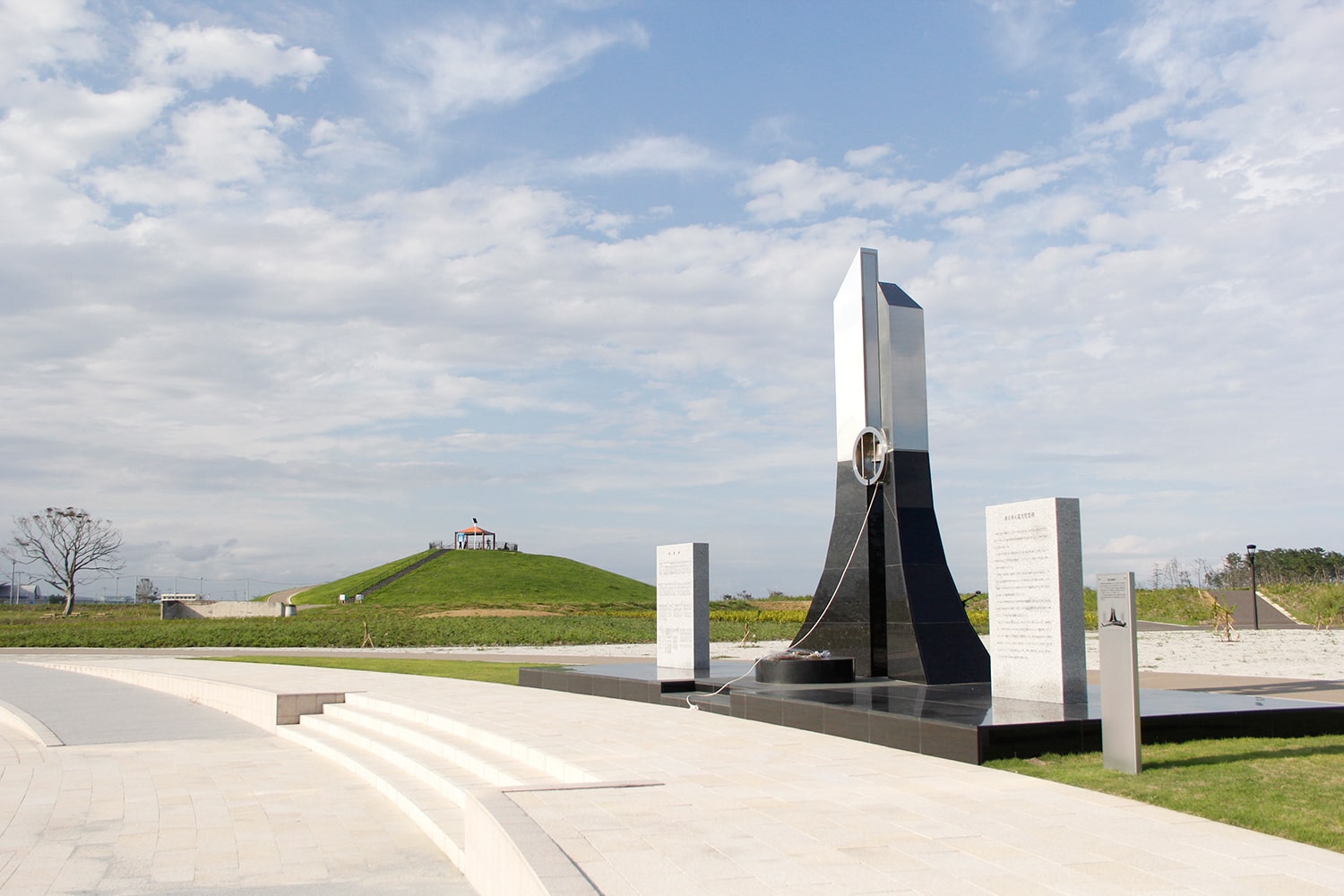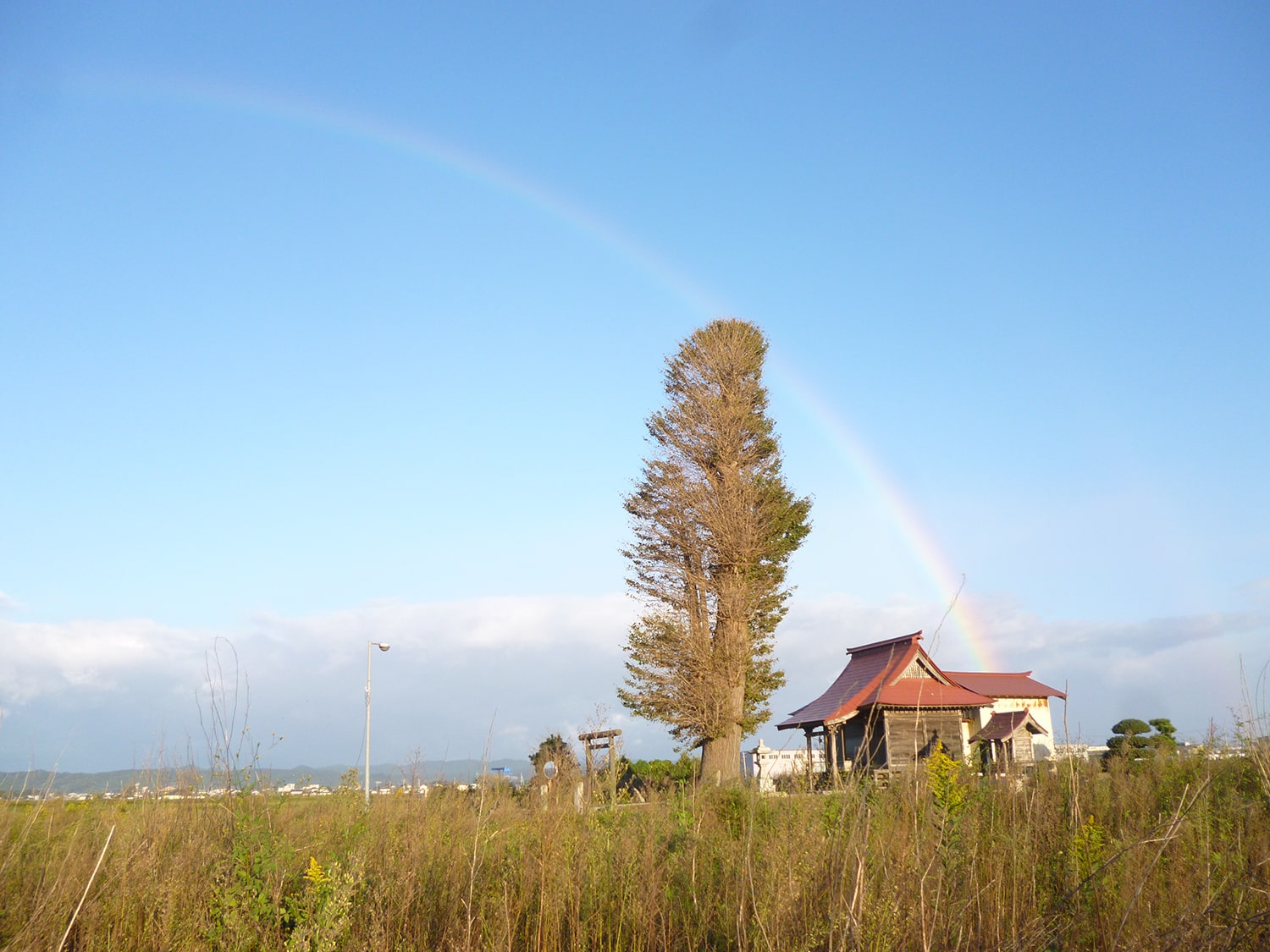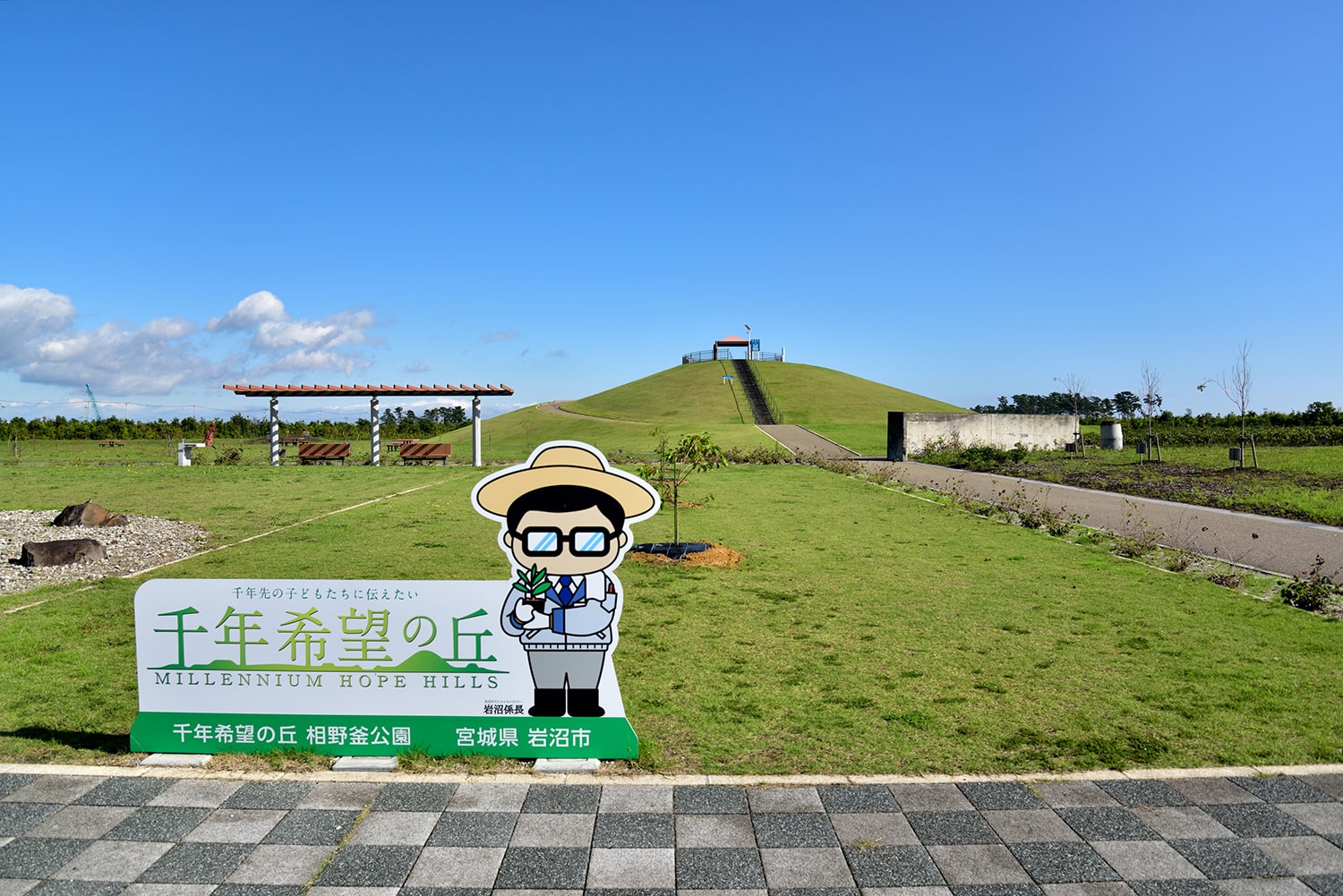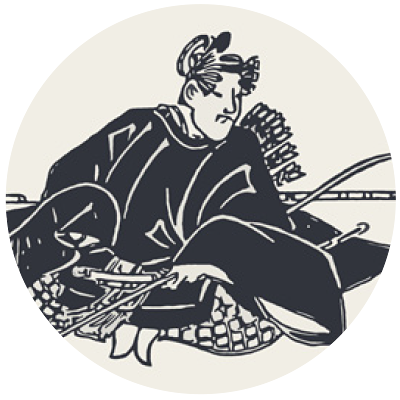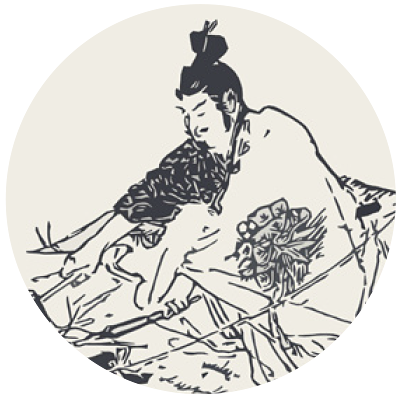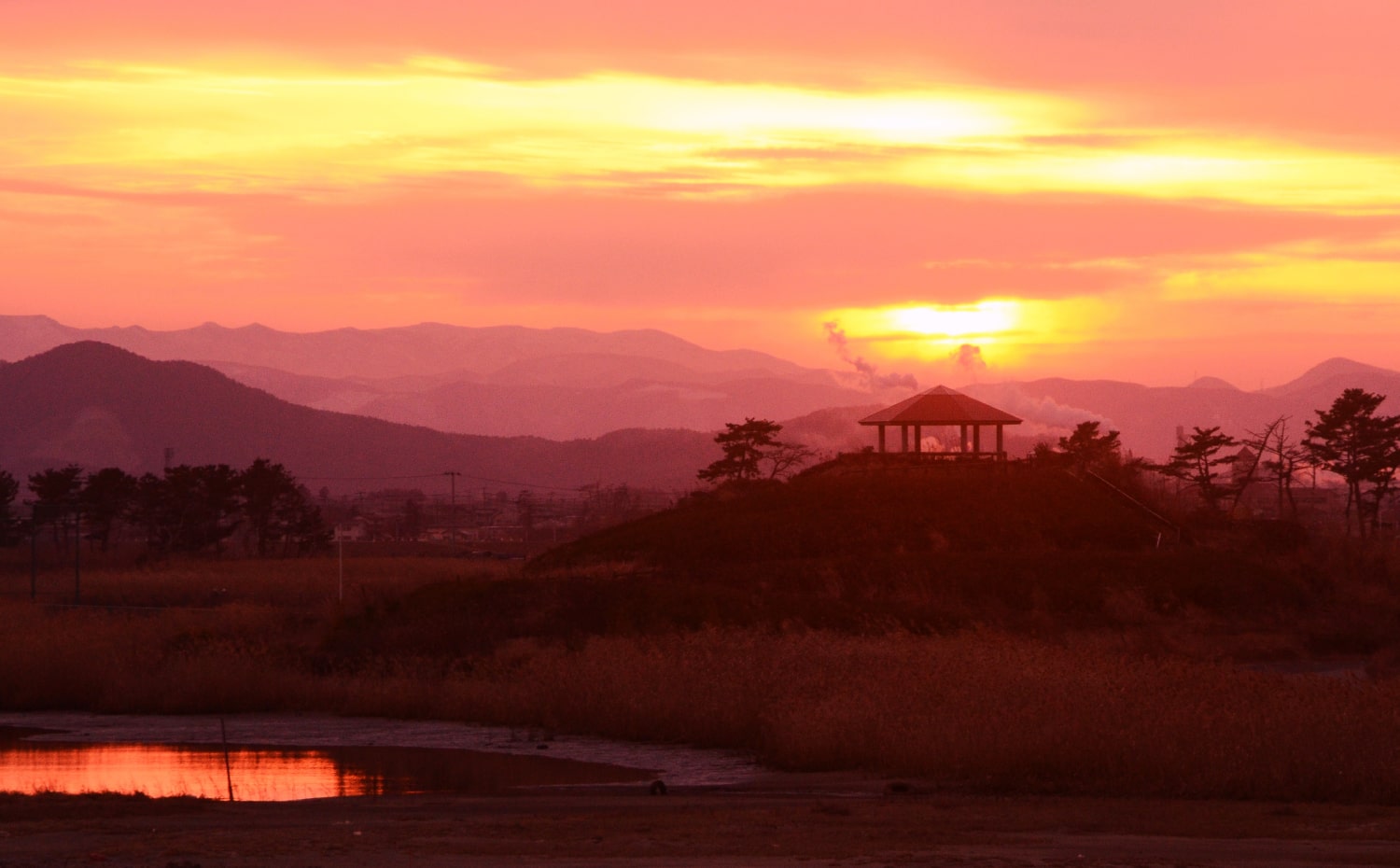
Giant Ginkgo
OVERVIEW
The coastal areas of Iwanuma City were hit with a 6-m tsunami in the Great East Japan Earthquake. This huge 18-m-tall ginkgo tree, said to be over 300 years old, survived that wave. Although it is still unable to bear fruit, it sprouts new buds every spring and seems to be in healthy shape. The beauty of the ginkgo in autumn, with its leaves dyed a rich gold color, is truly sublime.
The areas surrounding the ginkgo tree have been set up as a memorial park, expressing the desire to pass down memories of the disaster for the next thousand years. As well as the memorial facility, which displays photos of the tsunami, 15 evacuation areas were built on 11-m-high mounds of recycled rubble, so walk up one and try to imagine what it was like in the disaster.
DETAIL
ADDRESS
(Ainokama Park)Hama 177, Shimonogo, Iwanuma-shi
(Giant ginkgo)Maekawa 107, Hayamata, Iwanuma-shi
OPEN 9:00–17:00 (Millennium Hope Hills Exchange Center)
CLOSE
The New Year holiday
PHONE 0223-23-8577
PARKING 80 spaces
PERIOD Year-round

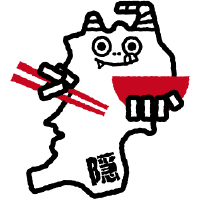
Reccommend
Local Tours
Using local guides, we provide many tours that let you discover and experience
the wonders of Japan lying hidden in the “everyday” of the nearby area.

IWANUMA city
As a hub for traffic to the Tohoku region since ancient times, Iwanuma was a post town on the old highway, and it flourished as the town around the Takekoma Inari Shrine and the castle town of the Iwanuma clan. In the Edo period, the Abukuma River, which flows to the south of the city, developed the city as a center for water transport. Today, transport has shifted from the rivers to the skies, and Sendai International Airport fills the river’s role. As it was in the past, the city of Iwanuma continues to be a place where people gather, come, and go.

Key Person

We make pouch curries to delight taste buds the world over!
Nishiki Shokuhin Co., Ltd./Koji Saito
Among the areas that suffered significant damage in the Great East Japan Earthquake, Iwanuma was the first to recover, and it is seen as a role-model municipality for having rebuilt while maintaining its local community. The coastal area features many reconstruction-tourism spots—such as Millennium Hope Hills, a memorial park that will pass on lessons from the disaster to children for the next 1,000 years, and Iwanuma Sheep Village, an open space that makes use of former residential land where you can enjoy contact with sheep. Also, some spots—such as Takekoma Shrine, which is one of Japan’s three great Inari shrines, and Kanahebisui Shrine, which enshrines a golden serpent that is said to bring luck in business and money—are famous for their great spiritual power. We at Nishiki Shokuhin develop and manufacture high-quality pouch curries to delight taste buds the world over. Please come and visit the shop next to our factory!
Specialty Products
Iwanuma faces the Pacific Ocean, and within Miyagi Prefecture, it is an area with a relatively mild climate. These conditions are used to cultivate produce such as rice and melons and flowers such as carnations. Dairy farming is also practiced here. With local specialties such as Iwanuma Tonkatsu and Iwanuma Tonchan and over 30 ramen restaurants, the area is also rich in quality cuisine.
Natural Environment
In Iwanuma—which has a rich natural environment that includes the Pacific Ocean, Abukuma River, and Shiga Highlands—you can enjoy seasonal sights wherever you go. Iwanuma is also full of historic scenery—such as a Giant Ginkgo Tree, which is said to be over 300 years old, and the pine of Takekuma, which appears in Matsuo Basho’s The Narrow Road to the Deep North.
Historical Person
Area Access

From Sendai Station
20min
【TRAIN】 From Sendai Station approx. 20 minutes to Iwanuma Station on the JR Tohoku Honsen Line

From Sendai Airport
20min
【BUS】 From Sendai Airport approx. 20 minutes to Iwanuma Station East Exit on the Rinkujunkan Bus








